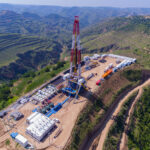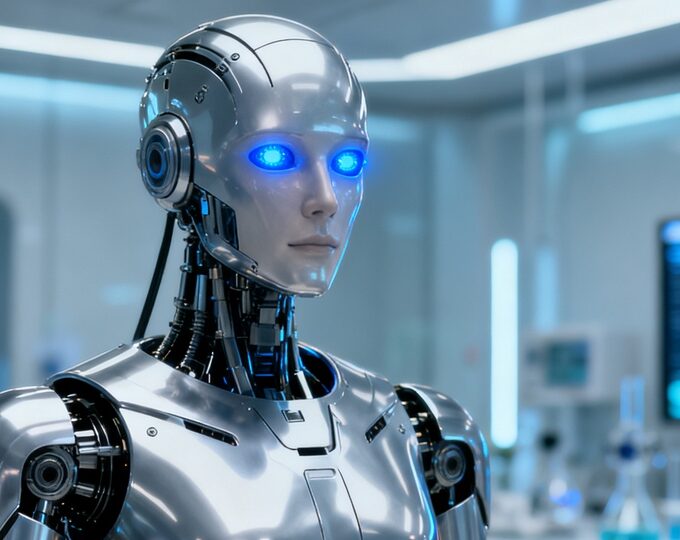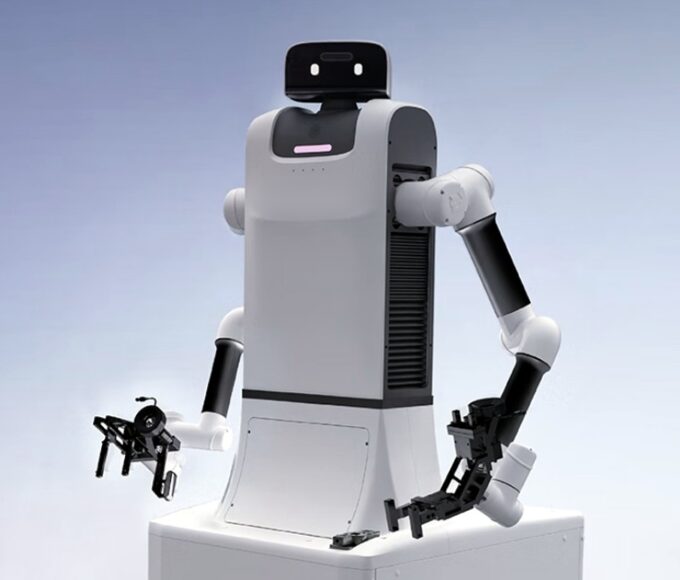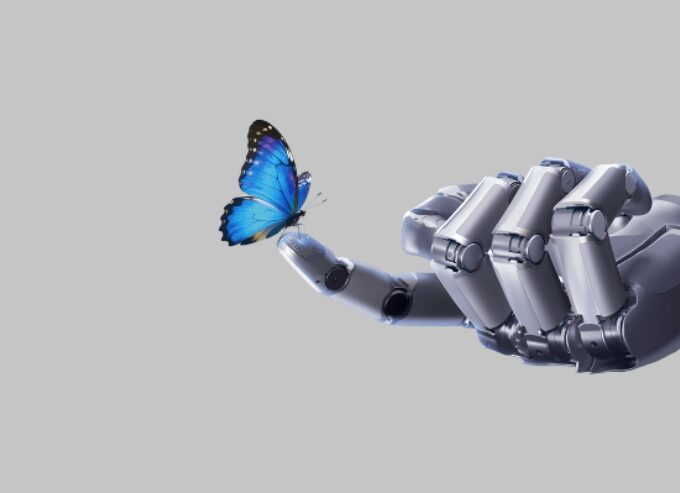In the ever-accelerating wave of technological advancement, Kawasaki Heavy Industries of Japan has introduced a groundbreaking innovation that has captivated the world—Corleo. This quadrupedal bionic robot redefines the very boundaries of mobile travel. Merging pioneering engineering with a bold, futuristic vision, Corleo stands as a testament to what is possible when robotics, artificial intelligence, and renewable energy converge. Officially unveiled on April 3, 2025, Corleo is set to be one of the showstoppers at the upcoming Expo 2025 in Japan, opening on April 13. It has sparked intense global interest and excitement from the moment it was revealed.
Design Inspired by Nature
Corleo’s exterior design is a stunning marriage of nature’s elegance and technological sophistication. Drawing biomimetic inspiration from agile, terrain-adaptive animals like horses, the design is not a superficial replication but rather a deep reconstruction of biomechanical principles. The development team conducted detailed studies of muscle and skeletal coordination in running, jumping, and climbing animals. These insights culminated in the creation of Corleo’s distinct mechanical limbs—each leg incorporates multiple high-degree-of-freedom joints and precision servo motors, enabling an elastic gait that closely mimics biological movement. The result is not only visually impressive but also functionally superior, as Corleo’s gait reduces energy loss and maintains dynamic balance across rugged environments.
Each of Corleo’s four robotic legs can adjust its angle flexibly, with front and rear limbs capable of moving independently up and down. When climbing slopes or stepping over uneven terrain, the rider doesn’t need to lean forward to maintain posture—the robot’s intelligent design ensures a steady, comfortable ride with excellent forward visibility. Furthermore, each leg is equipped with dual rubber “hooves”, which absorb shocks from rough terrain and provide excellent grip. Whether navigating grassy plains, icy landscapes, or gravel-strewn paths, Corleo remains remarkably stable. From a side profile, its chassis resembles a futuristic motorcycle body—only the wheels are replaced with bionic legs. Crafted from metal alloys and carbon fiber, its sleek exterior blends aesthetics with durability, offering both form and function.
Power and Performance
At the heart of Corleo’s powertrain is a 150cc hydrogen-powered engine, which delivers not only robust performance but also environmental harmony. Unlike conventional lithium battery-driven robots, the hydrogen fuel cell system offers the dual benefits of high energy density and zero pollutant emissions. When hydrogen reacts with oxygen in the fuel cell, it produces electricity to drive the motor, with only water vapor emitted as a byproduct. This clean energy model aligns perfectly with global efforts to combat climate change and overcomes the endurance limitations that traditional batteries face in extreme conditions.
Kawasaki has also developed an intelligent power management system that adjusts hydrogen flow in real time based on workload demands. This ensures stable output while maximizing energy efficiency, achieving a utilization rate exceeding 85%. In extended field trials lasting several hours, Corleo completed long-distance mobility tasks effortlessly, showcasing impressive endurance. The harmonious integration of the power system with its leg mechanics allows Corleo to perform a variety of motions, including sprinting, walking, trotting, and short hops, adapting to diverse application scenarios with agility and precision.

Intelligence and Interaction
What truly sets Corleo apart from conventional robots is its intelligent interaction system. The robot is equipped with an array of sophisticated sensors, including 3D LiDAR, visual cameras, and inertial measurement units (IMUs), forming a comprehensive 360-degree situational awareness system. Its 3D LiDAR alone can perform tens of thousands of scans per second, generating real-time, high-accuracy 3D maps. When combined with cutting-edge AI algorithms, Corleo is capable of rapidly identifying obstacles, charting optimal routes, and autonomously generating emergency plans when unexpected situations arise.
User interaction is also thoughtfully designed. Riders can control Corleo using body weight shifts and handlebars, which, along with adjustable foot pedals, provide a riding experience that feels natural, almost like riding a living animal. The robot’s interior features an interactive dashboard, displaying navigation data, posture and movement status, and remaining hydrogen levels, empowering the rider with full awareness and control. For nighttime travel, Corleo even projects visual path markers onto the ground, enhancing navigation in low-visibility environments.
Applications and Potential
The “Iron Man” of Rescue Missions
In disaster response scenarios, Corleo has demonstrated irreplaceable value. During a simulated earthquake rescue exercise, it entered a severely collapsed building with agility. Thanks to its compact and flexible body, it maneuvered through tight 0.5-meter-wide gaps to access the heart of the debris. Equipped with a life detection device, Corleo scanned over 1,000 square meters in under half an hour and transmitted the location data of trapped individuals back to the command center via its onboard communication module, buying critical time for rescue teams. In the future, with further technological integration, Corleo could be equipped with basic medical systems, providing immediate life support to injured survivors and becoming an indispensable asset to first responders.
The “Pioneer” in Scientific Exploration
Corleo’s potential in exploration is equally promising. Its water-, dust-, and heat-resistant build enables it to operate in extreme environments. In cave expeditions, Corleo can carry HD imaging equipment and geological sensors, delving into areas that are inaccessible to humans, capturing rare footage, and collecting valuable geological data. Looking further ahead, quadrupedal robots like Corleo may play a vital role in space exploration. Capable of traversing alien terrain, they could be deployed as reconnaissance units on other planets, gathering critical data to support future manned missions and expanding humanity’s understanding of the cosmos.
The “Star” of Entertainment
Corleo is also set to revolutionize the entertainment industry. In theme parks, visitors will soon be able to ride Corleo through immersive adventures. By simulating dynamic movement scenarios—such as jungle treks, mountain crossings, and high-speed gallops—enhanced with special effects and synchronized sound design, Corleo delivers a thrilling, lifelike experience that traditional rides simply cannot match. On stage, Corleo can even perform as a lead character. With precise motion control, it can dance, act, and interact seamlessly with human performers, creating visually stunning performances that push the boundaries of live entertainment and add a new layer of creativity to performance art.
The Future of Mobility
Corleo’s arrival marks a bold leap forward in Kawasaki Heavy Industries’ quest to redefine mobility. It also paves the way for a broader transformation across the entire industry. As artificial intelligence and clean energy technologies continue to evolve, quadrupedal bionic robots are poised to take on more roles in everyday life. In the future, they may become intelligent domestic assistants, helping with tasks like lifting heavy objects, monitoring elderly family members, or even escorting children. In the logistics sector, they could serve as terrain-adaptive delivery systems, efficiently transporting goods through areas where wheeled vehicles falter.
With Corleo as a forerunner, we are witnessing the dawn of a new technological paradigm, where intelligent, adaptive, and environmentally friendly mobility seamlessly integrates into our daily lives. From reshaping transportation to redefining rescue, exploration, and entertainment, Corleo is not just a robot—it is a vision of the future we are stepping into.












